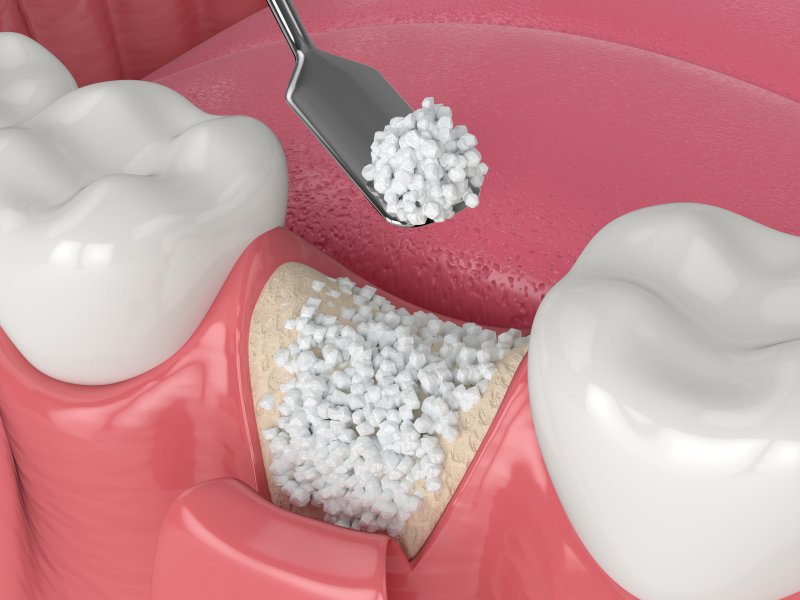Do You Need a Bone Graft to Receive Dental Implants?
July 16, 2022

Dental implants are designed to replace teeth all the way down to the root, making them one of the most popular tooth replacement solutions out there. In fact, there’s a pretty good chance you’ve heard about them before, either online or from loved ones. However, it’s less likely you know what a bone graft is or how it works. Keep in mind that if you plan to receive dental implants, bone grafting is a common treatment performed ahead of dental implant placement and may be necessary for rebuilding your smile. Keep reading to learn more about the details from a periodontist!
What Exactly is Bone Grafting?
Bone grafting is a surgical procedure designed to repair or rebuild bone tissue that has been lost over time. It’s essentially a transplant of healthy bone tissue to areas where it’s needed. In the case of dental implant treatment, it’s in the jawbone.
Whether you’re someone who has lost a tooth recently or you’ve had missing teeth for quite a long time, bone grafting may be needed before a dental implant can be safely placed. Keep in mind that the bone inside your tooth socket begins to break down as soon as the tooth is removed, so don’t wait to get scheduled for replacement as soon as possible.
When is Bone Grafting Necessary?
While bone loss can occur as a result of tooth loss, it’s not the only potential cause to keep in mind. For example, natural bone tissue can become deficient as a result of:
- Severe gum disease
- Face injury or trauma
- Developmental defects
- Empty space after teeth were removed
During your initial consultation, the periodontist can confirm the state of your alveolar bone (or the bone responsible for supporting and holding your teeth) and jawbone, then determine if a bone graft will be necessary before you can move forward.
What Happens During a Bone Grafting Procedure?
If you need a bone graft, the periodontist will confirm which type of graft will best meet your needs. For example, socket grafts prevent atrophy (or breakdown) of the alveolar bone, while lateral ridge preservation grafts increase the width of the jawbone so it can accommodate the dental implant.
While some grafts may require extra steps to complete, the process is relatively straightforward. After your mouth is numbed with local anesthetic, the gum tissue is opened and bone granules are placed into the socket. The tissue is then stitched closed and the graft is given roughly four to six months to heal. After you’ve healed, you’ll complete a follow-up appointment to have your dental implant placed.
While needing a bone graft can feel like just another step in an already long process, it’s worth having to ensure your dental implant lasts for as long as possible. Schedule a consultation with a periodontist today to confirm your tooth replacement needs!
About the Author
Dr. Franco Cordini has been practicing as a periodontist for over 20 years now and finds great pleasure in serving others through dentistry. His extensive specialty training in periodontics allows him to perform a wide variety of surgical dental services in-house, including the placement of dental implants, bone grafting, sinus lifts, and much more. To schedule an appointment with his office, you can contact him through his website.
No Comments
No comments yet.
RSS feed for comments on this post.
Sorry, the comment form is closed at this time.


